A really nice Seth Thomas Adamantine clock. manufactured March 1895. Although Seth Thomas is not on the dial I beleive the dial to be original to the clock. It is a HIP movement as shown by the adjustmet on th top of the dial. The clock has been running strong on my desk for 2 days. It winds easily and it strikes as it should.
History of Seth Thomas Adamantine Antique Mantel Clocks:
In the 1860’s, French clocks in slate, onyx or marble cases became popular in the United States. These cases were expensive, so the American clock manufacturers produced similar looking cases made of iron or wood. These clocks have become known to collectors as “Black Mantel Clocks”, and were popular from 1880 to 1931.
Seth Thomas made clocks in marble cases for a short time, from 1887 to ca. 1895. They also made clocks in iron cases finished in black enamel, from 1892 to ca. 1895. Seth Thomas is well known for their “Adamantine” black mantel clocks, which were made starting in 1882. Adamantine is a celluloid veneer, glued to the wood case. Adamantine veneer was made in black and white, and in colored patterns such as wood grain, onyx and marble.
Adamantine veneer was developed by the Celluloid Manufacturing Company of New York City, and was covered by U.S. Patent number 232,037, dated September 7, 1880. Seth Thomas Clock Company purchased the right to use the Adamantine veneer in 1881.
Manufacture Dates of Seth Thomas Adamantine Antique Mantel Clocks
The movement provides a guide to the date of an Adamantine clock. At first, most Adamantine clocks used a modified shelf clock movement (called the “hip” movement because of its shape) with the escapement outside the back plate. Around 1900, the model 89 movement was introduced, having the escapement between the plates. The two types can be distinguished from the front of the clock by the position of the regulating square. The back escapement type (up to ca. 1901*) has the regulating square above the numeral “12”. The model 89 has the regulating square below the center of the dial. These two types are evident in the illustrations above.
Many Seth Thomas clocks from 1881 to 1918 have a date code stamped in ink on the case back or bottom. Usually, the year is done in reverse, followed by a letter A - L representing the month. For example, April 1897 would appear as 7981 D.
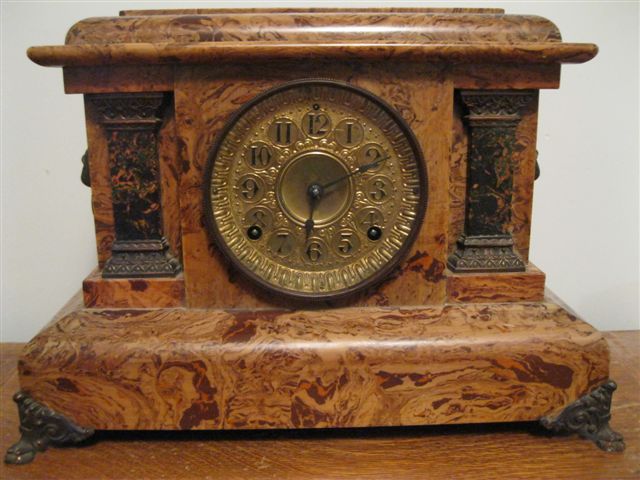


 Internet Horology Club 185
Internet Horology Club 185  IHC185™ Discussion Site Main Page
IHC185™ Discussion Site Main Page  Horological Discussions, Questions and Answers
Horological Discussions, Questions and Answers  Clocks, Including 400-Day Discussions
Clocks, Including 400-Day Discussions  Seth Thomas Adamantine Clock Ca. March 1895
Seth Thomas Adamantine Clock Ca. March 1895 Internet Horology Club 185
Internet Horology Club 185  IHC185™ Discussion Site Main Page
IHC185™ Discussion Site Main Page  Horological Discussions, Questions and Answers
Horological Discussions, Questions and Answers  Clocks, Including 400-Day Discussions
Clocks, Including 400-Day Discussions  Seth Thomas Adamantine Clock Ca. March 1895
Seth Thomas Adamantine Clock Ca. March 1895








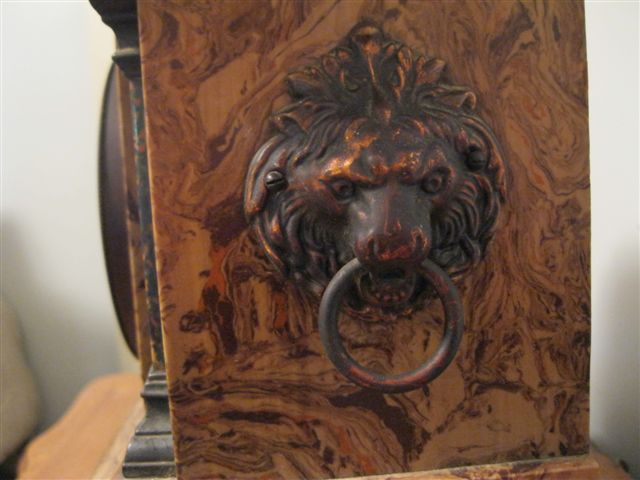
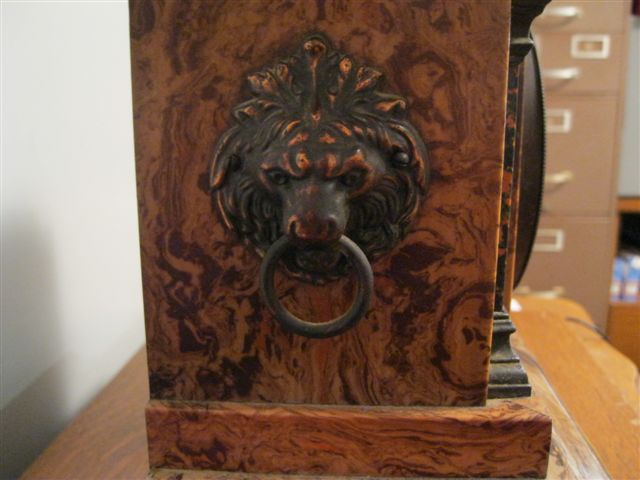
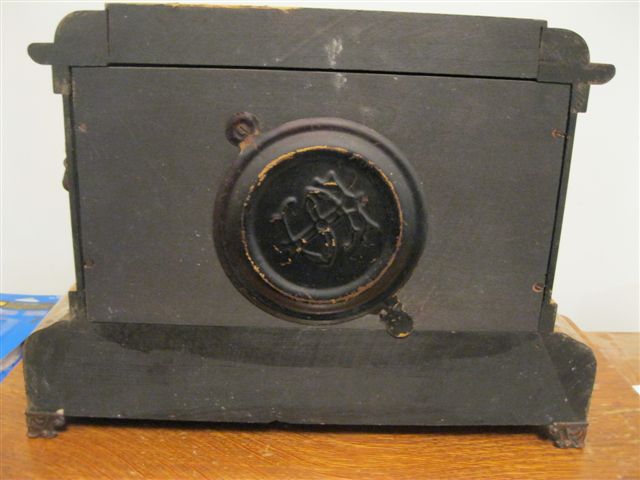
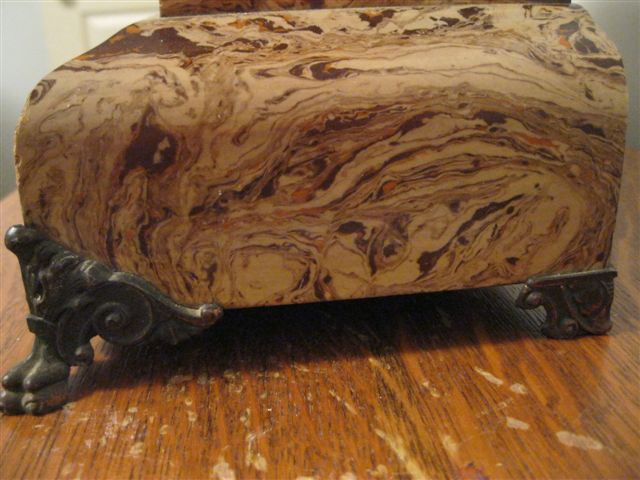
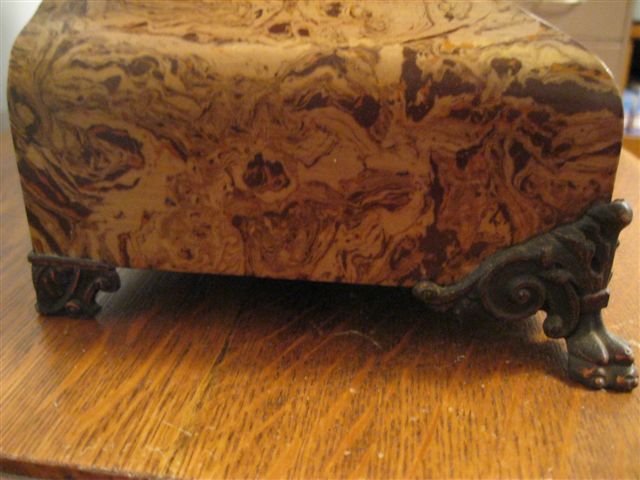
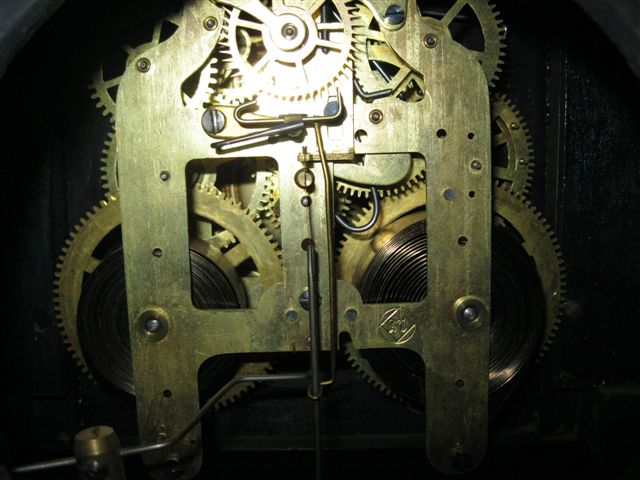
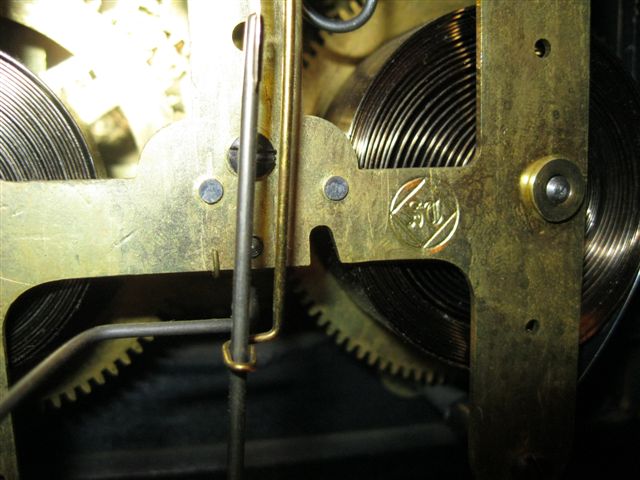
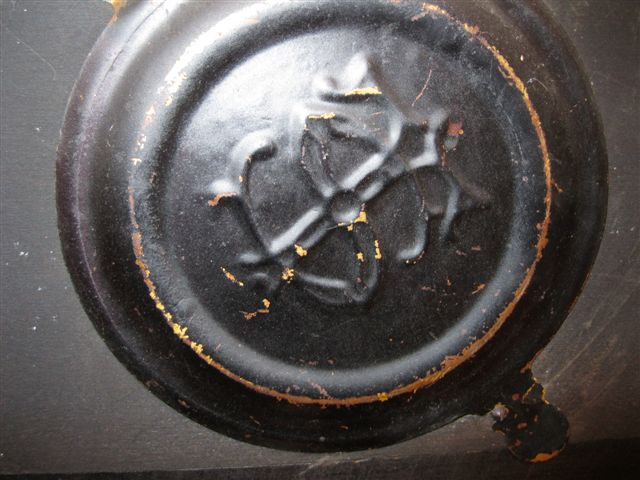
 Internet Horology Club 185
Internet Horology Club 185  IHC185™ Discussion Site Main Page
IHC185™ Discussion Site Main Page  Horological Discussions, Questions and Answers
Horological Discussions, Questions and Answers  Clocks, Including 400-Day Discussions
Clocks, Including 400-Day Discussions  Seth Thomas Adamantine Clock Ca. March 1895
Seth Thomas Adamantine Clock Ca. March 1895 Internet Horology Club 185
Internet Horology Club 185  IHC185™ Discussion Site Main Page
IHC185™ Discussion Site Main Page  Horological Discussions, Questions and Answers
Horological Discussions, Questions and Answers  Clocks, Including 400-Day Discussions
Clocks, Including 400-Day Discussions  Seth Thomas Adamantine Clock Ca. March 1895
Seth Thomas Adamantine Clock Ca. March 1895
